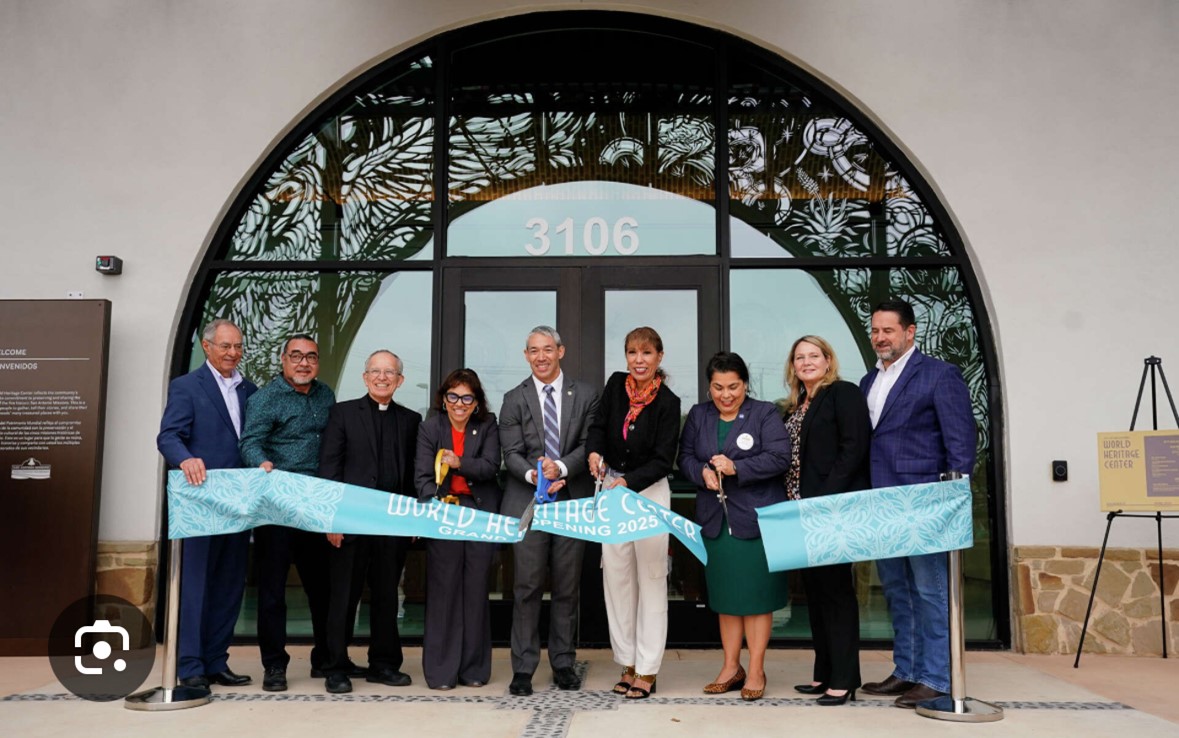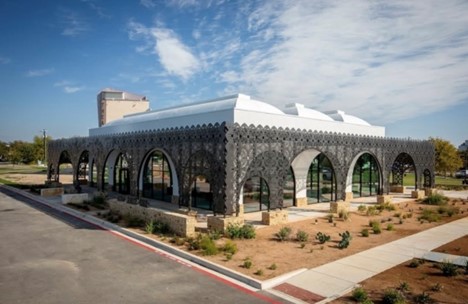
A momentous occasion took place this February that has made a massive cultural mark in San Antonio, TX. The grand opening of the World Heritage Center (WHC) was full of high energy and immense gratitude as the community gathered in celebration for the much anticipated reveal. Back in 2022, the center broke ground, beginning what has been a three year journey to opening day. There now stands a new construction of 10,000 square feet of space being used to share history, honor the indigenous community, and connect the community with helpful resources. The WHC is made up of multimedia art exhibitions, program space, a drum circle, walking trails and even a soccer field, all in dedication of the rich culture that saturates the history of this region. During the ribbon cutting ceremony, musicians played their instruments while dancers gracefully moved their eye-catching dresses to the rhythm. Many special guests attended the big event, Mayor Ron Nirenberg, District 3 Councilmember Phyllis Viagran, Director of Public Works Razi Hosseini, City Manager Erik Walsh, and Assistant City Manager Lori Houston. The main purpose of the WHC was to have a place that can hold and share the stories and legacies of important people and traditions of Southern Texas and Northern Mexico. San Antonio is home to five Spanish colonial missions that have helped shaped some significant points in Texas history. Majority of the families who were a part of those first five missions in various ways, have descendants who are still honoring them, and carrying on family morals and traditions to this day. Many of the early descendants of these missions helped plan, construct, and build the new World Heritage Center that is now open, adding even more sentimental value to the stories being told within the center. Mayor Ron Nirenberg, paid respects to this beautiful web of connections that brought nearly 1,000 people out to celebrate the big opening day. “The opening of the World Heritage Center is not just a celebration of our shared history, it is a vital bridge connecting the past and present, inspiring future generations to appreciate and preserve the rich cultural heritage of our beloved San Antonio, and sharing it with the world.”
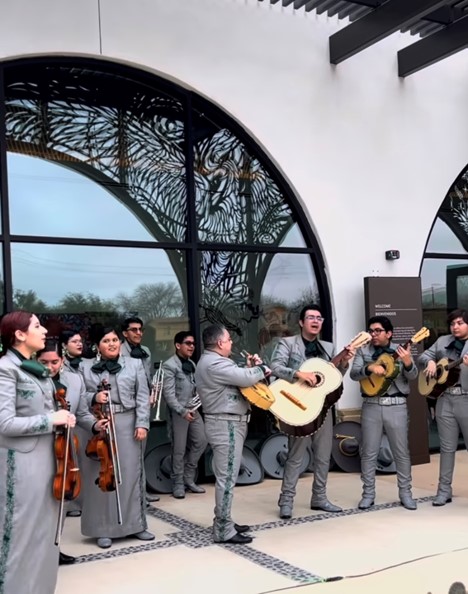
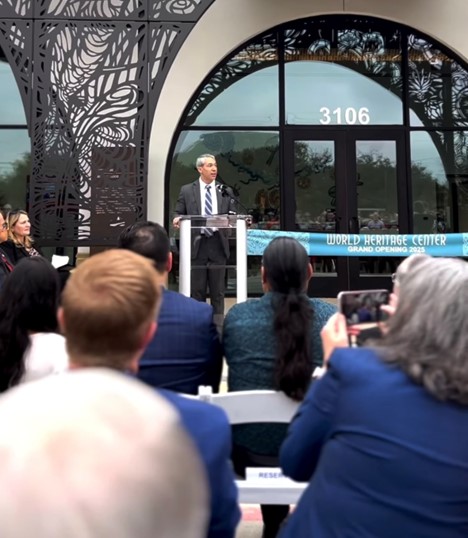
Dedication of the Community – For Us, By Us
The entire process of bringing the World Heritage Center into fruition involved the community from the ground up. The organizers behind this huge project were sure to incorporate as many authentic people as possible to curate a compilation of information that would be rich in context but also easy to understand. The World Heritage Office brought Gabriela Gamez onto the team, an exhibition curator who contributed insurmountable hours selecting pictures, art, and artifacts for the WHC. She even took the time to write text for each piece, in both English and Spanish. Talented local artists were used all throughout the WHC. Visual artist Adriana Garcia was responsible for creating a metal screening around the building as a legacy gift from the Tricentennial Celebration Commission. In the WHC documentary, she speaks on what inspired her to create the images she chose. “I wanted to honor the indigenous community by giving a nod to their creation story, so as you’re walking outside, if you look up you will see a water bird emerging from the springs; a nod to the creation story of the indigenous people and on the other side you’ll see a growing noal, which symbolizes resilience, which also gave sustenance to the people who decided to build a family.”
World Heritage and the UNESCO
The United Nations Educational Scientific and Cultural Organization (UNESCO) describes itself as “a specialized agency dedicated to strengthening our shared humanity through the promotion of education, science, culture, and communication.” The World Heritage List is a collection of places across the country that have been acknowledged for a remarkable accomplishment, or great natural beauty. Once being named as a World Heritage site, that place is legally protected by an international treaty administered by UNESCO for having historical, cultural, or scientific significance. UNESCO is composed of 21 state parties elected by the United Nations General Assembly, and advised by international panels of experts in natural and/or cultural history and education. The new World Heritage Center was designated as a World Heritage Site in 2015, well before it was a solid building. The intention to make this a place to honor the history has been there since day one. Honestly, with five Spanish colonial missions in one area, it shouldn’t come as a surprise that this place caught the attention of the UNESCO and is qualified as an official site.
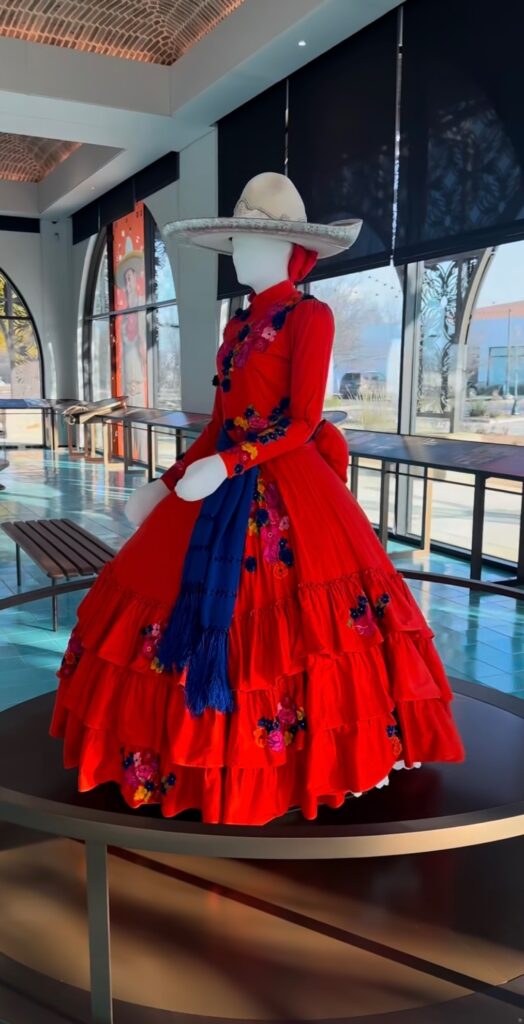
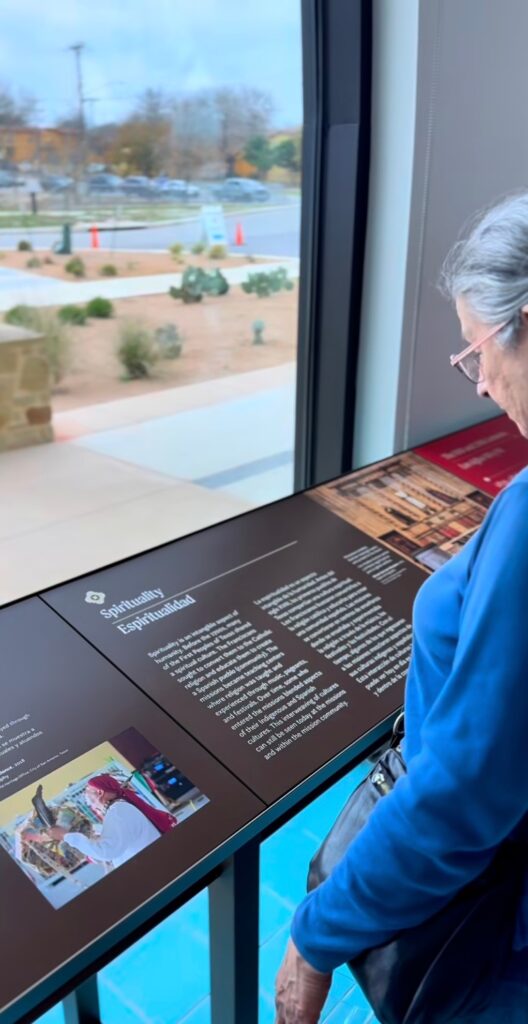
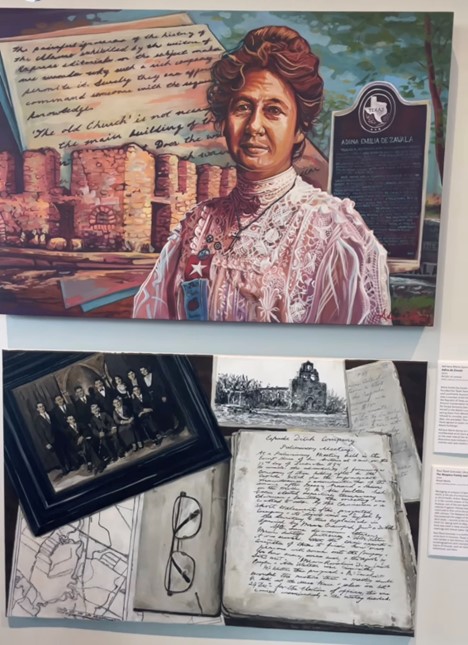
THE FIVE SPANISH COLONIAL MISSIONS
Mission San Jose, better known as “Queen of Missions” is the largest of all five. Founded in 1720, the San Jose Mission served the Coahuiltecan Natives, and played a significant role in the Underground Railroad. World Heritage has mentioned this site has the “finest examples of Spanish colonial ornamentation in the U.S”.
Mission Concepcion was established in 1716 and is the best preserved Spanish colonial structure in the U.S. It is the oldest unrestored stone church in the U.S and home to the birthplace of Nacogdoches County. This site is where the Battle of Concepcion happened during the Texas Revolution. It is a well-respected part of San Antonio Missions National Historical Park
Mission Espada was the first mission in East Texas, founded in 1690 it is the oldest Spanish mission to date. This mission was used to convert local Native Americans to Christianity.
Mission San Juan Capistrano is the 7th of 21 missions founded in 1716. Originally the birthplace of Orange County and also played a part in the French settlement in Louisiana. Much like Mission Espada, the San Juan mission was known for converting Native Americans to Christianity. Both Espada and San Juan Capistrano were relocated to San Antonio in 1731
Mission San Antonio de Valero is best known as The Alamo. This site of was founded in 1718 on the San Antonio River. It is were the infamous Battle of the Alamo where the State fought for independence from Mexico.
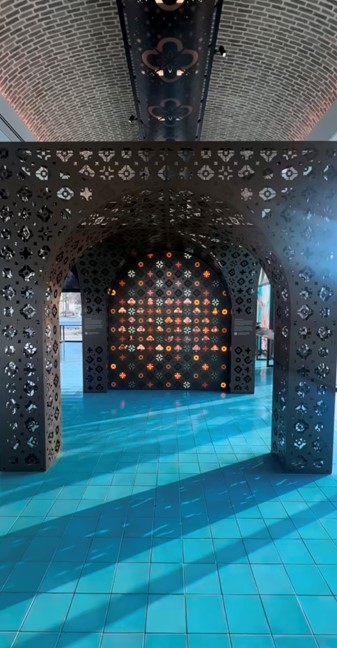
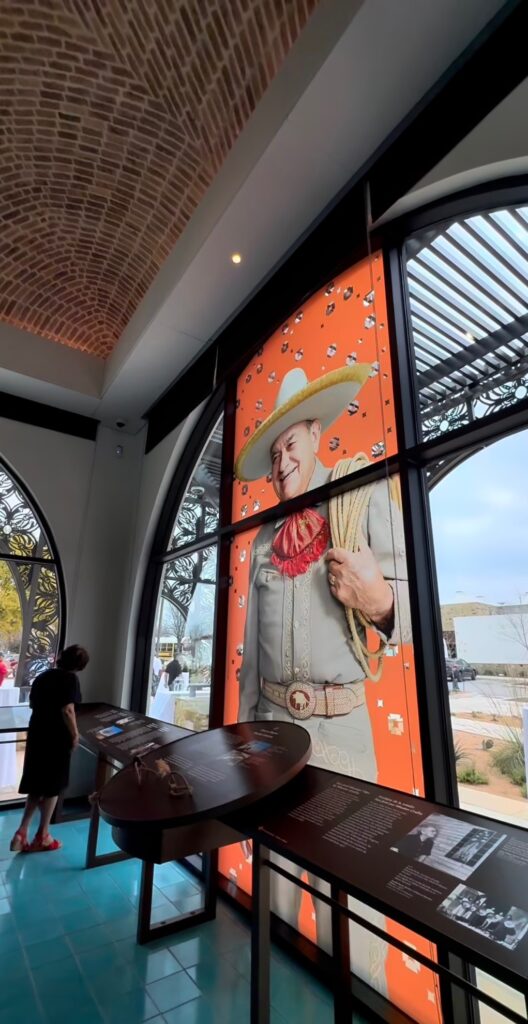
Just The Beginning
Seeing and participating in the progress of the World Heritage Center from blueprint to the grand opening has been a valuable experience to descendants of these historical landmarks. Adding another layer of history to San Antonio, Texas with current residents who want everyone to know their story. President and CEO of South Texas Business Partnership, and former District 3 Council member Rebecca Viagran, expressed how special the WHC is to her, the community, and the legacy of their families. “Knowing that people from across the world are going to come and see and really truly learn about the people of San Antonio, and people of South Texas, its’ just a great sense of pride and relief. It’s about time. This is a great reflection of our community. The intentionality of the Veranda. The intentionality of making sure that all of the voices in the community were heard, the world heritage office was so intentional and deliberate in having community input and that is something our community will pass on for generation to generation because they see themselves in this center.”
The World Heritage Center is free to the public for self-guided tours year-round.
3106 Roosevelt Avenue
San Antonio, TX 78214
Hours
Tuesdays, Wednesdays, Fridays 10am – 5p.m
Thursdays 10 a.m. – 8 p.m.
Saturdays and Sundays 10 a.m. – 5 p.m.


